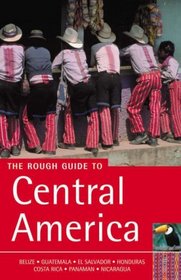Search -
Rough Guide to Central America 3 (Rough Guide Travel Guides)
Rough Guide to Central America 3 - Rough Guide Travel Guides
Author:
INTRODUCTION Corrugated by mountains and studded by volcanoes, Central America reaches from Mexico towards South America like a hooked, tentative finger. Its geography – seven piecemeal nations stacked on top of each other in a narrowing isthmus – is in many ways its destiny: a distinct region caught between two larger realities. The a... more »
Author:
INTRODUCTION Corrugated by mountains and studded by volcanoes, Central America reaches from Mexico towards South America like a hooked, tentative finger. Its geography – seven piecemeal nations stacked on top of each other in a narrowing isthmus – is in many ways its destiny: a distinct region caught between two larger realities. The a... more »
ISBN-13: 9781843532880
ISBN-10: 1843532883
Publication Date: 11/29/2004
Pages: 896
Rating: ?
ISBN-10: 1843532883
Publication Date: 11/29/2004
Pages: 896
Rating: ?
0 stars, based on 0 rating
Genres:
- Travel >> Guidebook Series >> Rough Guide
- Travel >> Latin America >> Central America >> General





